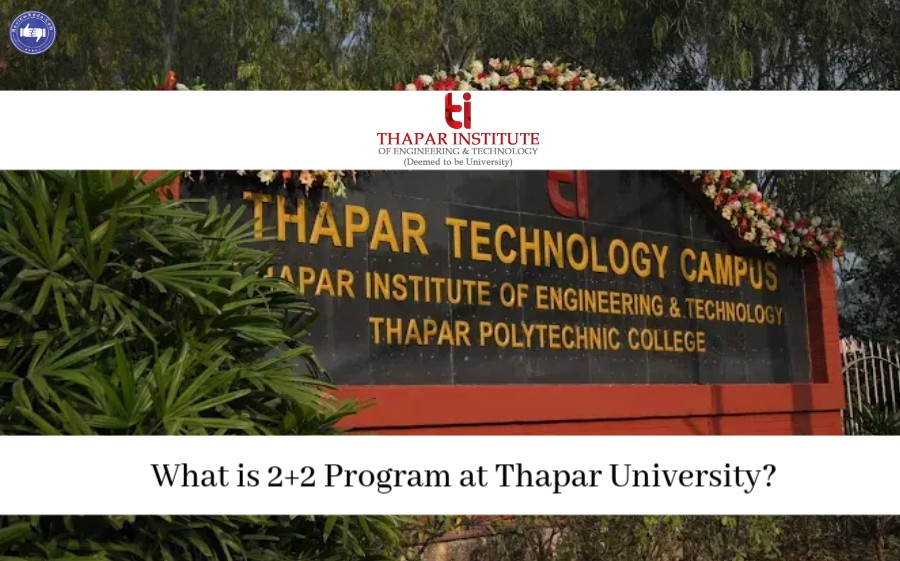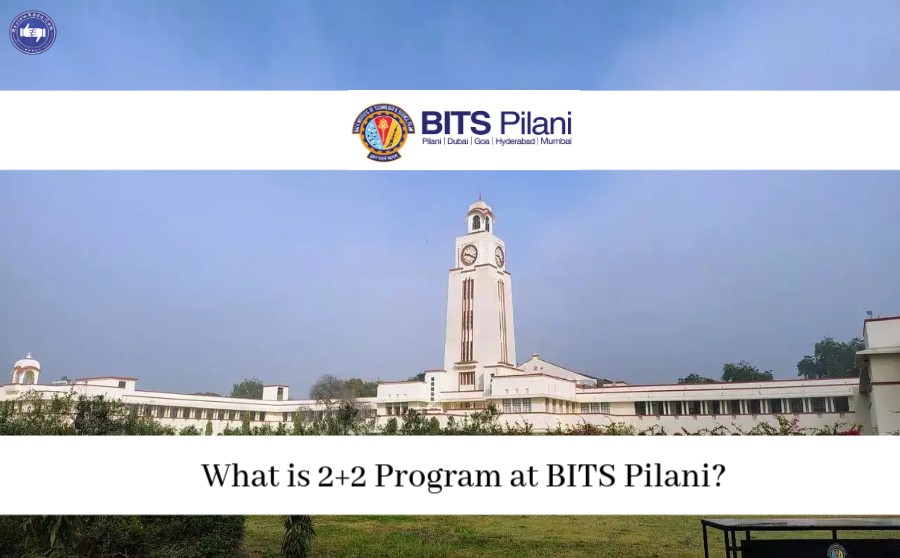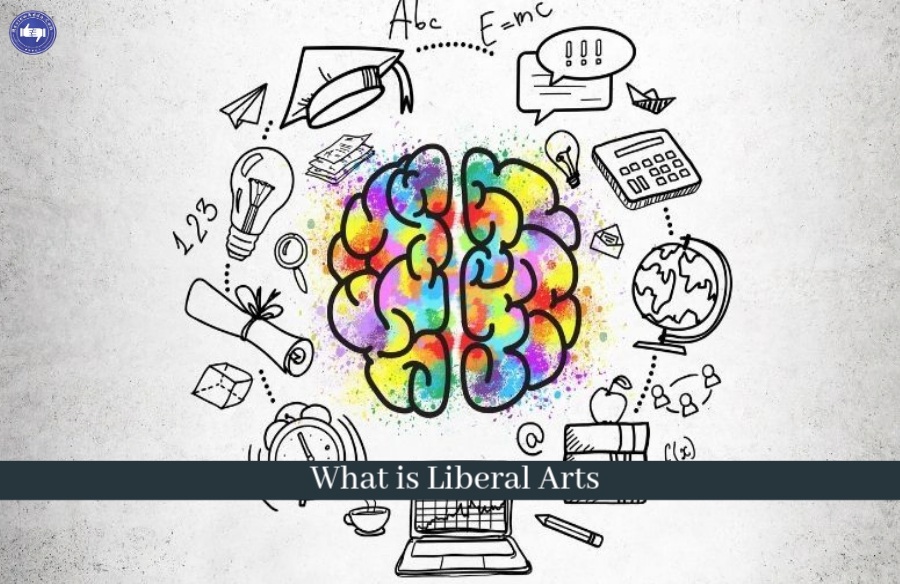Topic We Cover: Top Mass Communication Colleges in India
1. The fall of the Fourth Estate: State of the Indian media
2. Mass Communication Courses in India
3. Scope
4. Career Prospects
- Journalist
- News Anchor
- Copy Writer
- Media Planner
- TV Producer
- Camera Person
- Copy Editors
5. Top Mass Communication Colleges in India
6. The Factors
- Industry exposure
- Affordability
- College perception
- Student quality
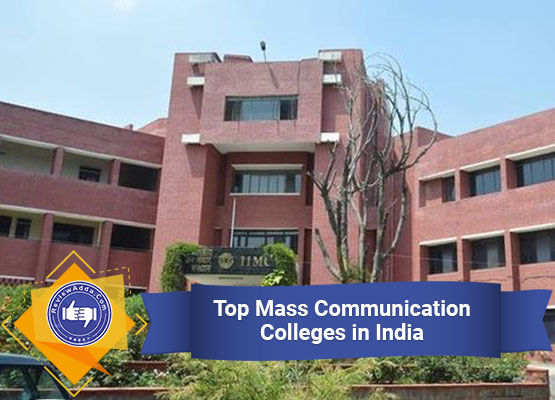
IIMC Delhi is known to be the best mass communication and journalism College in India
Mass Comm has slowly become a field of immense popularity with the massive expansion across various modes of communication. This includes the advent of increased viewership, the impact of social media and news websites. According to a report presented jointly by FICCI and KPMG in 2015, the Indian media sector was growing at an annual rate of nearly 14%
With massive revenues paving its way and viewership records being broken every cycle, media houses are slowly becoming major players in the profit-driven nature of the Indian market. Since the media sector is showing potential to scale even higher profits, it is natural that they will look to add to their already widespread workforce.
To accomplish this task, the need for Quality Mass Communication Courses in obvious. Though there is an abundance of institutions offering majors in mass comm, their quality and acceptability in the jobs market remains suspect.
Besides recruitment quality issues, there is another problem which is slowly dawning on the media industry. While monetary gains may have bolstered the media sector's standing, there hasn't been a simultaneous increase in journalistic standards.
So what is the holistic state of the Media Sector in India?
The fall of the Fourth Estate: State of the Indian media
So what is the role of the media?
India is an old civilization, but the modern country we currently inhabit was structured and institutionalized in 1947. Like the structures of many democracies in the world, our government has three branches of functionaries, namely the legislative, the executive and the judiciary.
The functions of these branches are straightforward. The legislative makes the laws, the executive makes sure these laws are enforced and the judiciary ponders cases where these laws might have not been obeyed.
In addition, there is another branch necessary for every working democracy. The media, or more fondly called the fourth estate, is the fourth unofficial branch of the democracy which keeps the other three branches in check.
The role of the media in creating a functioning democracy cannot be overstated. A democracy is functional only within a well-knit system of checks and balances. The media provides this necessary framework by keeping all the branches of government in check.
By definition, this is the fundamental role of the media. However, the media off late has witnessed a massive fall in credibility. Whether it has been controversies surrounding the credibility of journalists, or the flawed approach of some of the more popular news dailies in the country, the media has had a rough time hiding its dirty laundry for a few years now.
One of the major problems renowned journalists such as P Sainath and others have cited is the brazenness with which corporate houses run certain news channels and newspapers. While in other democracies such a situation would be untenable, India media houses have shown uncharacteristic belligerence regarding this issue.
With corporate houses at the helm, the focus of many news outlets has changed significantly from reporting key issues to creating issues out of small problems. The obsession with Bollywood, cricket and petty politics is being encouraged while issue such as the flagging economy, farmer suicides, bank NPAs and corruption are being kept on the back burner.
The role of the media was mentioned before as a sector informing the public of the affairs of the country. An adage to this responsibility also includes ushering an evolution in the mindset of the public from bare rottenness to enlightenment and potential illumination.
For instance, Article 51(a) of the Indian constitution deems it a necessity to enthuse scientific temper amongst the general public. However, what we see routinely on news channels are religious babas predicting the future and the mumbo-jumbo of the horoscope bandwagon. As a developing nation striving to realize its potential by meeting its destiny, our media is doing its best to dumb the narrative down at every opportunity it gets.
The ruin of the fourth estate is very real in India. The most dangerous part of this situation is that while the quality of reportage is falling, the revenues being made by news channels are seamlessly increasing. This implies they won’t check their approach for mistakes as they are already making a lot of money.
This seems like a problem which will take a long time to solve.
Aren't they all?
Mass Communication Courses in India
The downward trajectory of reportage quality can be arrested successfully if the coming generation of media professionals is armed with the right ethical mindset. After all, the current generation of mass comm students will go on to become senior editors and CEOs of premier news networks.
Thus, the future of journalism and mass comm in our country is placed squarely on the shoulder of the quality of media studies in colleges and universities. Many students are choosing mass communication courses after 12th to ingratiate them completely into the media sector
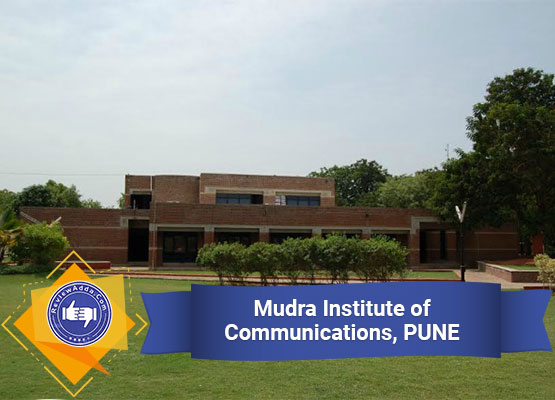
MICA is a well known college for journalism and media studies in Western India
Scope
For those worried about the scope of mass communication in the future, stop. While most industries are seeing a downturn of some sort or another in India and the world, the media sector has been progressing seamlessly at a healthy rate of 13%. This rate eclipses the growth rate of India itself, which was at its peak at 9% a few quarters back.
Thus, the fears of the media sector collapsing are simply unfounded. As the sector grows, employment will surely increase as newspapers, media channels and magazines will need more and more manpower to power the industry. From a quantitative point of view, the media sector is a very safe bet.
In terms of scope regarding qualitative aspects, the sector has a high potential as well. Consider the points made previously about the falling quality of reportage. If the trust deficit between the public and media channels does reach a fracture point, new streams of media will emerge to act as a counterweight to the mainstream. Thus, there are key qualitative aspects where a key space for improvement lies.
Career Prospects
When one considers working in the media industry, one of the first things which come to mind is sitting in front of a camera and anchoring a primetime news show. Though being a news show host is a big part of the industry, it is one of the many cogs which drive the media sector.
There are a number of other crucial positions which have to be filled. Being a multi-billion dollar industry, the Indian media sector cannot function without the necessary skills of well drilled news professionals. A few key positions in a typical media house have been listed below:
1. Journalist
One of the most crucial positions in a media house is the role of journalists. In essence, the job of a journalist is to find out news and file reports on the same. As simple as this may sound, it is far from being so.
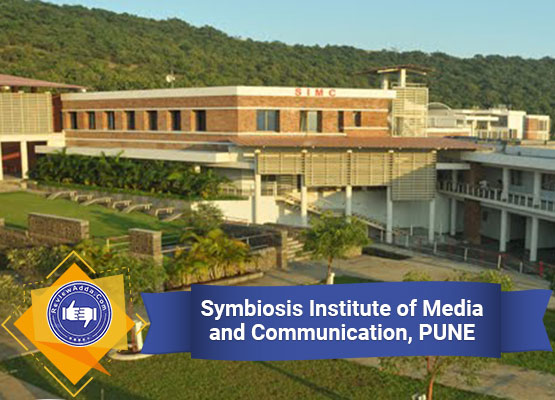
SIMC Pune has steadily gained traction for its journalism and mass communication courses
A journalist has to get the news before anything becomes a news item on the agenda. This is made possible by having well placed sources in various lines of work across the country. The importance of a source to a journalist cannot be overstated. A good source can be invaluable in times when news might be hard to come by. At the same time, a bad source can be equally as dangerous.
Television journalism includes getting the news through the pipeline as soon as possible and even appearing on TV shows as a contributor, portrays the modern form of journalism. Unlike the early days when news could be late for a couple of days, the current generation has the option of switching to another channel if they don’t get the most updated news.
Thus, journalism has become a much more proactive job which requires being faster and better than everyone else in the business.
2. News Anchor
This is the part of mass communication many people are more familiar with. A news anchor is someone who is supposed to present the news on a TV channel in a purely informative manner without portraying his/her own opinion.
 Get Updated Review ( Voice Based Alumni Feeback)
Get Updated Review ( Voice Based Alumni Feeback)
-
 Check Review (Alumni Feedback) - Lovely Professional University - [LPU] – Click Here
Check Review (Alumni Feedback) - Lovely Professional University - [LPU] – Click Here -
 Check Review (Alumni Feedback) - Amity University – Click Here
Check Review (Alumni Feedback) - Amity University – Click Here -
 Check Review (Alumni Feedback) - Jagran Lake City – Click Here
Check Review (Alumni Feedback) - Jagran Lake City – Click Here -
 Check Review (Alumni Feedback) - SRM University Sonipat – Click Here
Check Review (Alumni Feedback) - SRM University Sonipat – Click Here -
 Check Review (Alumni Feedback) - Ansal University – Click Here
Check Review (Alumni Feedback) - Ansal University – Click Here
The role of a news anchor may seem skewed considering the present style of news anchoring, but the puritan argument for the role remains the same. The process of a proper news show is that an anchor presents the news as it were and the viewers form an opinion on the news on their own. To help the viewer form an opinion, the news anchor can invite relevant guests on the show who put forth their arguments on the news. At no point should the anchor try and influence the viewer.
3. Copy Writer
Though the title may seem a bit uninspiring, the role of copy writer requisites a good amount of creativity. A copywriter essentially has to create slogans and headlines which aim to grab the attention of the viewing public.
Copywriters are often employed by advertising agencies that are keen to identify the right slogan for their brand and product. Thus, copywriters find employers in multiple sectors as their skills are transferrable to many aspects of marketing.
A key aspect of being a copywriter involves staying updated with every passing trend. The role of copywriter dictates creating the best possible tagline for a news story, brand or product which fits seamlessly with a changing narrative.
4. Media Planner
Though the term media planner may suggest the title belongs to someone at a news channel or a newspaper, this isn’t exactly the case.
A media planner is generally employed by an advertising firm to identify key media platforms which the firm can use for advertising.
Essentially, a media planner is well aware of the different types of demographics which view a particular programme. By using this information, a media planner plans a strategy to promote a product by targeting a certain target audience.
Some platforms which media planners study for analysis include the press, television, radio and online media. Media planners have to be well versed with various types of marketing tactics to promote products and should work closely with heads of other departments such as sales and accounting to build a coherent structure around a marketing plan.
5. TV Producer
A producer, more popularly termed as the executive producer (EP) in media houses, coordinates all the functions required to air a new show. This includes deciding the agenda of the news by consulting the journalists, doing a rundown with the news anchor and technical team, giving a go-ahead to copy editors regarding the headlines and handling the guests which come for the news show.
Like a manager running an office, an EP has to keep a tab on all the operations of a newsroom. One of the most challenging jobs in a media house, the importance of an EP is only exemplified by the fact that the position requires commitment every day of the week.
6. Camera Person
A cameraperson is often termed as the forgotten man behind every news broadcast. Without a skilled cameraperson, shooting any show can become a nightmare for an EP. Thus, it is instrumental for any news network to have a number of skilled camerapersons on their payroll. Besides covering the newsroom shows, camerapersons also have to travel with correspondents on reporting locations. While the correspondents take all the plaudits, it is the camerapersons which are often forgotten in the hurley-burley of news broadcasting.
Nevertheless, a news network cannot function at for a minute without a cameraperson. Like a journalist, a cameraperson does not have any fixed hours of work and can be called upon at any time of the day.
7. Copy Editors
Copy editors were more synonymous with print media until a few years back. However, the ushering of digital media has opened the floodgates for copy editors.
The job of a copy editor is to edit the written work turned in by a writer. In print media, the roe of a copy editor becomes crucial as every word omitted from a copy can save the newspaper company a lot of money.
With the advent of digital media, copy editors are being employed by several news channels to monitor content which goes onto their websites. Recognizing a potential platform for domination, news channels in India are competing vociferously for domination over the online multiverse. This thirst for domination has opened up opportunities for several writers and editors.
Top Mass Communication Colleges in India
Having established the constituents of a news channel and the importance of the media, we now move on to ranking the top mass communication colleges in India.
The need for ranking these colleges is apparent. With more and more students vying for prospects in the mass comm sector, the number of colleges offering these courses has increased greatly. Since mass communication is a very industry-oriented course, it is necessary to choose a college which has the requisite connections to provide a top draw course.
The ranking do not include government colleges. This omission has been done as most mass comm aspirants are aware of the specifics and qualities of government colleges. On the other hand, they are usually unaware about are the specifics of private colleges offering mass comm and journalism courses. To avoid redundancy in the rankings, only the top private colleges for mass comm studies have been included.
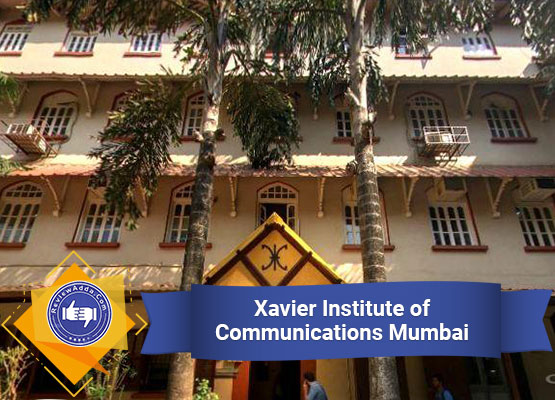
XIC Mumbai is counted amongst the best colleges in India for journalism and mass communication
The Factors
To rank any given set of colleges, it is necessary to first establish the factors which will be used to discern the best colleges in the country for mass comm and journalism. The factors which will decide the ranking of some of the best mass communication colleges in India are as follows:
1. Industry exposure
It is pivotal for any college teaching mass comm and journalism courses to ingratiate the students with the workings of various types of media platforms. Unlike a usual office where an employee can take his time to learn the trait, a media house cannot carry a single individual along as there needs to be cohesion all around. Thus, it falls down to colleges and universities to design a curriculum which has ample industry exposure.
2. Affordability
Mass comm doesn’t provide a career which has an instant monetary benefit after college. Thus, it is wise to choose a more affordable college if the quality isn’t being compromised much.
3. College perception
All news is based on perception. The same holds true for most media professionals a lot of times. A mass comm course from a reputed college goes a long way in getting someone placed in an appropriate workplace. On the other hand, a less reputed college on your resume can leave your profile besmirched.
4. Student quality
The competency of students doing a certain course can dramatically change the fate of a mass comm college. The only way a college can monitor its student quality is by imposing a wholesome admission process which validates a student’s credentials.
Top private mass communication colleges in India have been listed below.
|
Ranking |
College/University |
Course type |
Industry Integration (out of ten) |
Affordability (out of ten) |
College Perception (out of ten) |
Student quality (out of ten) |
|
1 |
· PGD Journalism and Marketing Communication · PGD Mass Communication · PGD Film, TV and Digital Video Production · PGD Communication for Deveopement |
9.4 |
8.5 |
9.4 |
9.4 |
|
|
Well knit with various media houses, which play a crucial role in shaping curriculum |
Considering PGD courses last one year, course isn’t on the cheaper side |
College is highly rated amongst media moguls and aspirants alike |
Peer competence is very high level due to stringent admission policy |
|||
|
2 |
PGD Journalism |
9.2 |
8.3 |
9.2 |
9.2 |
|
|
Borrows its ties with the industry from the main campus in New Delhi |
Not as affordable as other government colleges |
College perception is excellent |
Student quality is monitored through a highly focused entrance exam |
|||
|
3 |
MA Mass Communication |
9.1 |
8.2 |
9.1 |
9.0 |
|
|
With the ‘Symbiosis’ brand name, one can be sure of ample industry exposure |
Fees is very high compared to other mass com colleges |
College perception is excellent partly due to Symbiosis brand name |
Student quality is well maintained with a well cordoned admission procedure |
|||
|
4 |
|
8.9 |
8.0 |
8.9 |
9.0 |
|
|
Is known for combining industry inputs with traditional standard of teaching |
Very expensive for in comparison to other mass media colleges |
College perception is decent for media studies |
Student quality is well maintained with stable admission policy |
|||
|
5 |
· PGD Print Journalism · PGD Broadcast Journalism · PGD Online Journalism |
9.0 |
8.2 |
9.0 |
9.0 |
|
|
Industry ties are well established |
Not affordable for typical middle-class aspirants |
College perception is very stable. Considered to have one of the best journalism courses in India |
Student quality is excellent |
|||
|
6 |
Bharatiya Vidya Bhavan S P College of Communication and Management, Delhi |
· PGD Journalism · Masters in Mass Communication · PDG Public Relations |
8.9 |
9.0 |
8.9 |
8.8 |
|
Well knit ties with various print media companies and news networks |
Very affordable compared to other colleges on this list |
College perception is excellent. Known to be one of the top mass communication colleges in Delhi |
Student quality is good, but not as top draw as admission policy is dictated by central university |
|||
|
7 |
· PGD Broadcast Journalism · PGD Journalism |
9.0 |
8.5 |
8.9 |
9.0 |
|
|
Reasonably strong connections with top media houses, especially in India |
Affordable compared to other top colleges |
Perception is excellent with obvious connection with newspaper company ‘Malayalam Manorama’ |
Student quality is very good |
|||
|
8 |
· BA Journalism and Mass Communication · BA Film and Television Production · MA Film and Television Production · MA Film and Television Production · MBA Media Management |
8.6 |
8.3 |
8.7 |
8.7 |
|
|
Has some key connections with top draw news networks |
Fees is very high |
Amity name may be synonymous around India, but not as much for journalism courses. |
Student quality is difficult to maintain with high intake |
|||
|
9 |
· B.Sc Media Science · M.Sc Media Science |
8.8 |
8.8 |
8.8 |
8.7 |
|
|
Seeks advice from various media houses and networks regarding teaching methodology |
Relatively affordable for most middle-class families |
Counted amongst the best mass comm colleges in East India |
Student quality isn’t as high XIC or SIMC, but relatively decent |
|||
|
10 |
· BBA Media and Communication Studies · PGD Media and Entertainment PGD Media and Communication Management |
8.9 |
8.1 |
8.8 |
8.8 |
|
|
College has well established connections with news networks and media houses |
Not as affordable as some other top government colleges |
Counted amongst the top emerging colleges for mass comm and journalism studies |
Student quality is top class with many good aspirants choosing the college |
|||
|
10 |
· BA Journalism · MA Media and Communication Studies |
8.7 |
8.8 |
8.8 |
8.7 |
|
|
Being one of the oldest universities in India, Christ University has always maintained its relations with news networks and newspaper companies |
Very affordable for aspirants from all backgrounds |
College perception is decent as it has managed to sustain its name over a long period of time |
Student quality is relatively decent |
|||
|
11 |
· BA Media and Communication · MA Media and Communication |
8.6 |
8.0 |
8.5 |
8.4 |
|
|
Has some well knit connections with prominent news networks |
Very expensive compared to other mass comm colleges |
Perception is premised on reputation of Manipal brand |
Intake is very high, causing student quality to fall |
|||
|
12 |
Bachelor of Mass Media |
8.0 |
8.8 |
8.0 |
8.0 |
|
|
Not as popular amongst news houses and media circles as the other top college |
Affordable in comparison to some other colleges on the list |
Perception isn’t as good as some other colleges on the list |
Student quality isn’t up to the standard |
|||
|
13 |
· Bachelor in Mass Communication, Advertisement and Journalism · Master in Mass Communication, Advertisement and Journalism · Diploma in Mass Communication, Advertisement and Journalism · PGD in Mass Communication, Advertisement and Journalism |
7.9 |
8.7 |
7.9 |
7.9 |
|
|
Industrial connections aren’t up to scale |
Affordable when compared to other mass comm colleges |
Perception isn’t top draw amongst media houses or aspirants |
Not the first choice amongst mass comm and journalism aspirants |
|||
|
14 |
· PGD in Advertising and Marketing Communication · PGD in TV and Radio Production · PGD in Corporate Communication and Event Management · PGD in Digital Media and Web Journalism |
7.8 |
8.6 |
7.8 |
7.9 |
|
|
Connections with news networks and media houses not as well knit |
Fees is lower compared to the cost of pursuing mass comm at some other colleges on the lust |
Perception isn’t at its standard best |
Not counted amongst the top mass comm colleges |
|||
|
15 |
· Diploma in TV Production and Journalism · Diploma in Developmental Journalism and TV Production · Diploma in New Media |
7.6 |
8.9 |
7.8 |
7.8 |
|
|
One of the oldest colleges in Delhi. Integration with media houses is slightly suspect |
Fees is nominal compared to courses offered by other colleges |
Not as well celebrated for its media studies cell as it is for other courses offered |
Student quality is reasonably decent |
|||
|
16 |
· B.Sc in Mass Communication, Advertisement and Journalism · PGD Mass Communication, Advertisement and Journalism · M.Sc Mass Communication, Advertisement and Journalism |
7.4 |
8.9 |
7.5 |
7.6 |
|
|
Industrial connections virtually insignificant |
Affordable for most applicants |
Not known for its media courses across the country |
Quality of students isn’t great as the best talents are not aware of the college |
|||
|
17 |
BA Journalism and Mass Communication |
7.1 |
8.4 |
7.3 |
7.4 |
|
|
Mass comm courses find a few takers |
Not affordable for students from most backgrounds |
Not known for journalism or mass comm courses |
Student quality is found lacking |
|||
|
18 |
· B.Des Film and TV Production · BA Journalism and Mass Communication · M.Des Film and TV Production · MA Journalism and Mass Communication |
7.0 |
8.4 |
7.2 |
7.2 |
|
|
Very few connections with functional news networks and media platforms |
Expensive when the ROI of the course is considered |
Not as famous for mass comm or journalism courses |
Student quality isn’t top draw as college isn’t the first choice of most aspirants |
|||
|
20 |
· Bachelor of Journalism and Mass Communication · MA Mass Communication |
6.9 |
8.9 |
6.9 |
6.9 |
|
|
Industry exposure is virtually non-existent |
Affordable in comparison to other colleges on the list |
Not known specially for journalism courses |
Student quality isn’t top draw as admission process is too lenient |



